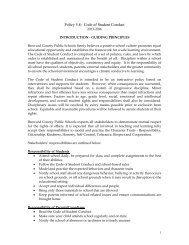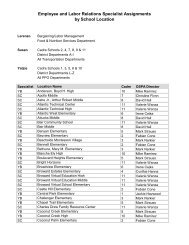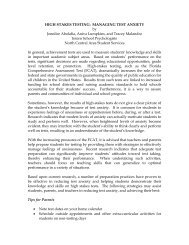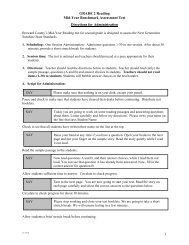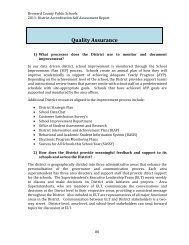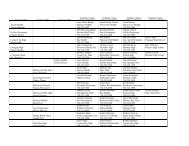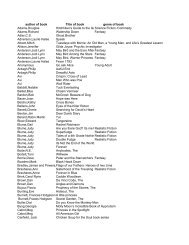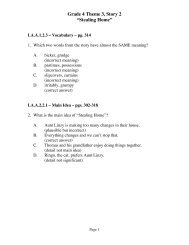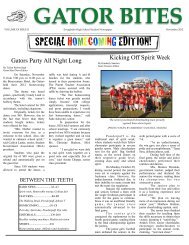Haitian Culture Curriculum Guide
Haitian Culture Curriculum Guide
Haitian Culture Curriculum Guide
Create successful ePaper yourself
Turn your PDF publications into a flip-book with our unique Google optimized e-Paper software.
one of the two Generals of Division, the other was Clairveaux, a mulatto. By some, Dessalines was<br />
thought to excel Toussaint in military genius although he learned to sign his name quite late in life.<br />
In May 1803, Alexandre Petion suggested some formal act of unification that could secure the<br />
allegiance and effective collaboration of the congo chiefs. The generals and the chieftains met on<br />
May 14. With Christophe, Petion, and Clerveaux beside him, Dessalines stressed the need for<br />
unity. Up to this moment, the rebels had fought under the flag of France. On May 18, the last day<br />
of what later was called the Congress of Archaie, all participants swore allegiance to Dessalines.<br />
Seizing the French Tricolor which draped the table at which he stood, Dessalines ripped out the<br />
white band and handed the blue and red ones to stitch to Catherine Flon, goddaughter of his wife.<br />
The revolutionaries now had their own flag.<br />
Dessalines governed the territories under his command with an iron rod, and in spite of limited<br />
constructive capacity for government, he had a shrewdness and ruthless determination that were of<br />
service to his people. He mobilized the courage and bravery of his officers and soldiers into a<br />
common love for liberty and an eagerness for independence.<br />
In the early morning of November 18, 1803, Dessalines sent General Capois to take position on the<br />
hills of Charrier, between Haut-du-Cap and Cap-Francais. The approach to Charrier ran up a long<br />
ravine under the guns of Vertières, occupied by the French army. Capois lost his hat to a grapeshot,<br />
and then his horse went down. Capois picked himself up, drew his sword, told his soldiers to go<br />
forward, and began to lead them again.<br />
This was the ultimate battle of the war for independence. The following morning, captain general<br />
Rochambeau sent his assistant to negotiate the terms of a surrender. On January 1, 1804,<br />
Dessalines, along with Christophe, Petion, and thirty generals and superior officers, proclaimed the<br />
independence of Saint Domingue, which they renamed Haiti. They established the second republic<br />
in the Americas, the first independent black republic in the world. Haiti and its people had begun a<br />
new era in history.<br />
References<br />
Fouchard, Jean. The Maroons: Liberty or Death. Out of Print.<br />
Heinl, Robert Debs. Written in Blood: The Story of the <strong>Haitian</strong> People 1492-1995. Washington,<br />
D.C.: University Press of America, 1996.<br />
James, Cyril Lionel Robert. The Black Jacobins: Toussaint Louverture and the San Domingo<br />
Revolution. New York: Vintage Books, 1989.<br />
Leyburn, James Graham. The <strong>Haitian</strong> People. Westport, CT.: Greenwood Publishing Group,<br />
1980.<br />
Schoelcher, Victor. The Life of Toussaint Louverture. Westport, CT.: Greenwood Publishing<br />
Group, 1953.<br />
7



